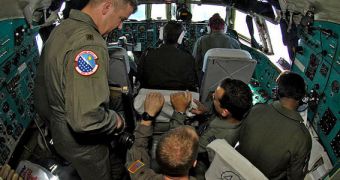A team of scientists at University College London (UCL), in the United Kingdom, announced the discovery of the root causes behind a phenomenon called load induced blindness (LIB). The group argues in a new paper that excess visual information is the main reason why this type of blindness occurs. Patients who suffer LIB have a tendency to feel as if someone is dimming the lights all around.
This discovery is very important for preventing the escalation of LIB incidence in the general population. Researchers say that the new data could be used to create mitigation strategies that would analyze workers in all walks of life and in all industries and find scenarios where too much visual information could potentially lead to load induced blindness.
Categories that naturally exhibit a higher incidence of LIB include pilots and surgeons, who have to constantly process vast volumes of visual data and make relevant, life-or-death decisions based on this process. Additionally, this study explains why some people may have difficulties steering clear of lampposts or newspaper stands on busy streets.
The situation is especially dire for airline pilots, who constantly have to process feeds from numerous flight instruments. Of all plane crashes, more than half are ultimately caused by human errors, which are themselves most likely triggered by a pilot or co-pilot missing or misinterpreting vital information.
In a series of experiments conducted on healthy volunteers, UCL investigators determined that test subjects were able to identify the correct rotation of stripped patches on multiple computer screens around 95 percent of the time, if the task they were performing was cataloged as low load. For high load tasks, the success rate dropped to 64 percent.
“Spotting the appearance of any critical image in the environment depends on its level of contrast as our neurons are more responsive to stronger contrasts. In high load situations people needed significantly more light contrast to spot rotations with a threshold of 27% contrast, compared with 18% contrast for low load conditions,” says scientist Nilli Lavie.
“In other words the neuron responses required more contrast and the image appeared dimmer in the high load. For a pilot, this could make the crucial difference between whether or not they spot that the hand of a dial has moved or a warning light has come on, or see something through the window that was not detected by instruments,” adds the expert, who is a professor at UCL.
The main conclusion of the study was that an excessive visual information load triggered the same effect on visual neurons as dimming the light contrast in the image participants were watching.
“What’s fascinating is that the relationship between image contrast and people’s ability to spot things is shifted in high-load scenarios in a pattern that is the very same as if the image’s level of light contrast was turned down,” concludes Lavie, who led the new investigation.

 14 DAY TRIAL //
14 DAY TRIAL //